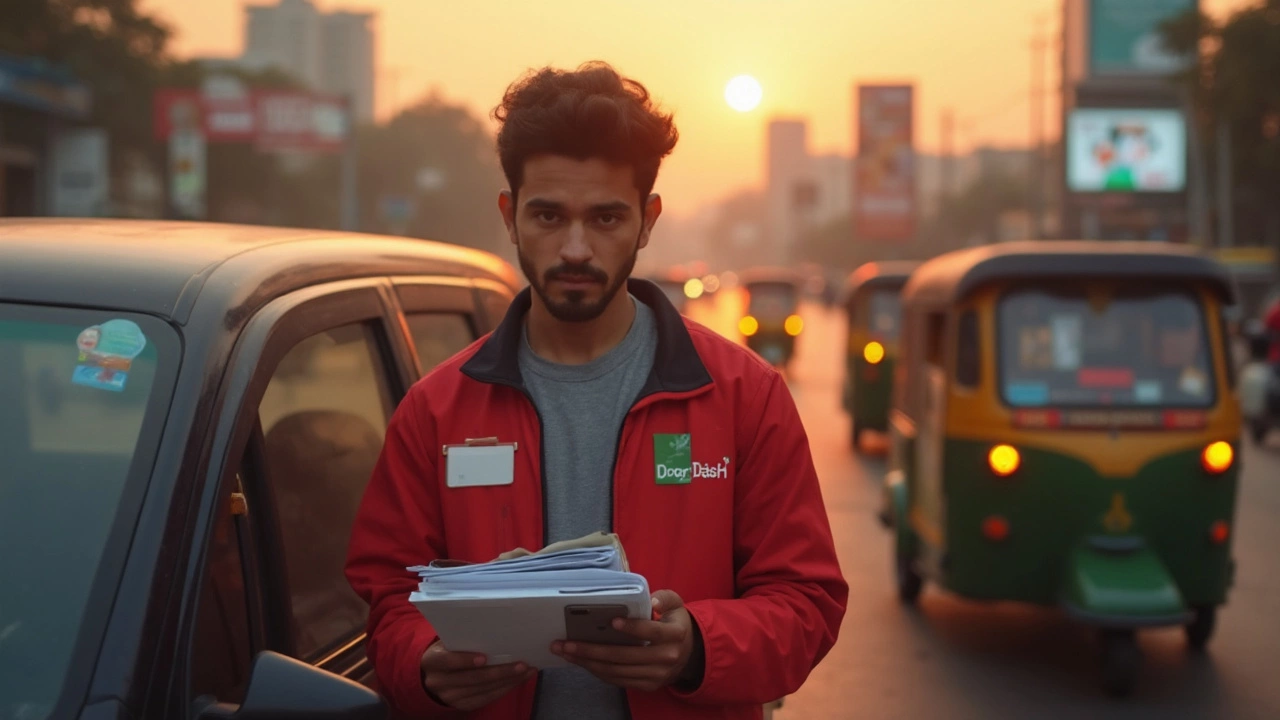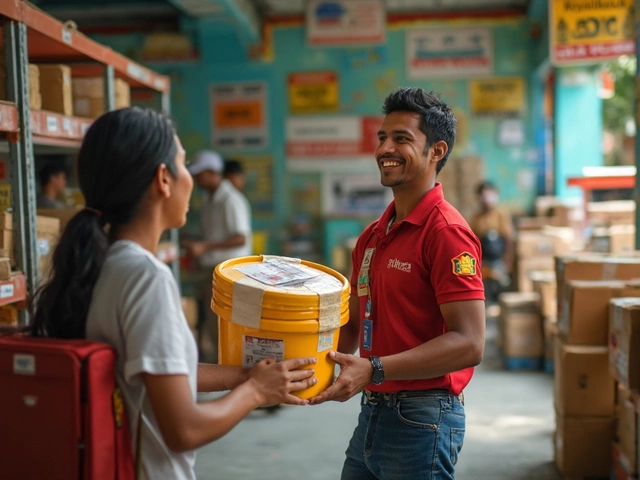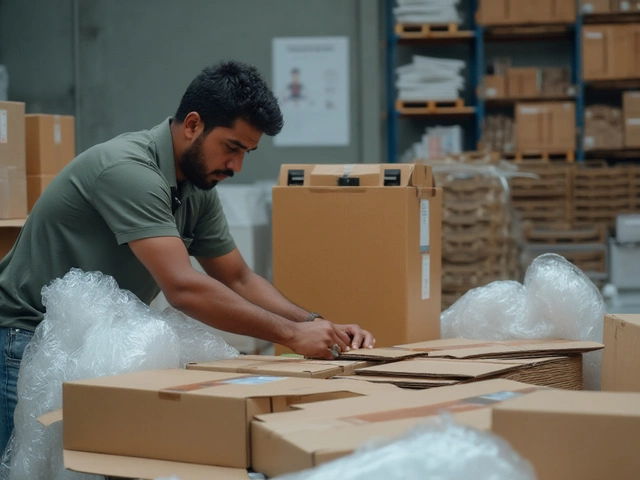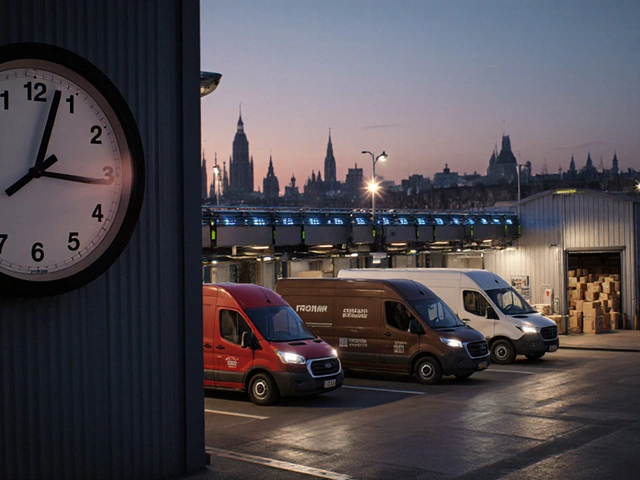Delivering food for DoorDash sounds simple, but car insurance gets tricky when your car becomes a money-maker. As soon as you accept your first delivery, you're not just a normal driver anymore—you're using your car for business. And most personal car insurance policies don’t like that. In fact, a lot of insurers see gig driving as riskier, so they raise your rates or might even deny a claim if you have an accident while on a delivery run.
The price jump isn’t just a scare tactic. Some insurance carriers tack on an extra $20 to $50 a month for something called a "rideshare endorsement" or "delivery add-on." Others might make you switch to commercial insurance, which is a whole new level of pricey. If you skip telling your insurer and keep using your car for DoorDash, you’re playing with fire—one serious accident and you could be left paying out of pocket.
If you’re looking at your budget and wondering if DoorDash is still worth it, you’re not alone. Getting the right numbers and understanding what really drives up those costs is the first step to making smart choices and keeping more of your delivery cash.
- Why Delivery Work Raises Your Insurance
- How Much Will Your Premium Go Up?
- DoorDash Insurance vs. Personal Insurance
- Top Companies for Gig Work Coverage
- Smart Ways to Lower Your Costs
- What DoorDash Drivers Wish They Knew
Why Delivery Work Raises Your Insurance
If you’re thinking about driving for DoorDash, here’s the big thing you need to know: personal car insurance isn’t built for delivery jobs. Once you start using your ride to drop off food, your risk profile changes and that sets off alarms at insurance companies.
Insurers see delivery work as more dangerous for a few reasons. First, you’re on the road a lot more than the average driver, especially during busy and risky times like lunch, dinner, or late nights. The more time you spend driving, the higher your odds of getting into an accident. Second, gig work often means dashing through different neighborhoods, dealing with unfamiliar roads and rush traffic—all of which equal more chances for mistakes.
Here’s another wrinkle: most policies say they won’t cover accidents that happen during “business use” unless you pay extra. So if you’re delivering for DoorDash and get into a crash, your claim could get denied unless you’ve got the right delivery or rideshare add-on.
- Insurance companies check how often and when you drive. More miles and peak-hour driving mean more risk to them.
- If you’re carrying food or other goods, you’re also dealing with more distractions—like checking the app or rushing to meet delivery times.
- Delivery drivers file more claims, so insurers raise rates for everyone doing this kind of work.
| Factor | Impact on Risk |
|---|---|
| Extra Driving Hours | Increases likelihood of collisions |
| Unfamiliar Routes | Bumps up accident chances |
| Peak Hour Driving | More crashes during busy traffic |
| Distractions | App use and orders can cause mistakes |
| Claim Frequency | Delivery drivers make more claims overall |
If you’re signing up for DoorDash, don’t just hope for the best. Call your insurance and be upfront about delivery work. Hiding it could mean you’re not just risking your car, but your whole financial future. The jump in premium for DoorDash drivers isn’t just “because they can”—it’s tied to real, measured risk on the road.
How Much Will Your Premium Go Up?
This is the truth: if you're delivering for DoorDash, your car insurance isn’t going to cost the same as someone who just commutes to work or heads out on the weekend. Insurance companies know you’re driving more miles, dealing with crowded parking lots, and racing the clock. That all adds risk.
So, what’s the actual damage to your wallet? Most drivers will see an increase between 15% and 50% if they add a rideshare or delivery rider to their existing policy. For someone paying $120 a month for full coverage, that can mean another $20 to $60 per month, just to be fully covered while running orders. The added cost depends on your state, driving record, insurance company, and how much time you spend dashing.
Check out how these numbers shake out for typical DoorDash drivers depending on their insurance situation:
| Coverage Type | Typical Monthly Cost Before DoorDash | Added Cost for Delivery | New Total Monthly Cost |
|---|---|---|---|
| Basic Liability | $45 | +$15 to +$30 | $60–$75 |
| Full Coverage | $120 | +$20 to +$60 | $140–$180 |
| Commercial Policy | N/A | Varies (usually $150+ total) | $150 and up |
If your insurer offers a rideshare add-on, that’s usually the cheapest way to stay legal and protected, but not every insurance brand offers this. If your company pushes you toward a full commercial policy, you could be looking at a big jump—even double your old rate.
State Farm, GEICO, and Progressive all have add-ons for gig drivers that are easier on the budget. But you should always call your insurer and ask if their coverage works for DoorDash (some still see food delivery as a different risk from driving for Uber or Lyft).
Tips to keep your premium lower:
- Bundle your home or renter’s insurance with your car policy.
- Drive safe and keep a clean record—claims send all policies sky-high.
- Shop around before you start DoorDashing—prices swing a lot between companies.
- Consider raising your deductible if you can handle a bigger payout if something happens.
Never just cross your fingers and think your regular policy will slide by. A denied claim could wipe out months of delivery income in one go, so the upfront cost is better than rolling the dice.
DoorDash Insurance vs. Personal Insurance
This might surprise you, but your personal car insurance policy almost never covers you while you’re making deliveries for DoorDash. Most regular policies are written for "personal use," meaning trips to the store, picking up your kids, or heading to work. As soon as your car is part of delivery gig work, things change.
Here’s what’s actually covered if you're out on a delivery:
- DoorDash car insurance only kicks in after you’ve accepted a delivery—so from the moment you head toward the restaurant until you drop off the food. It’s called "excess coverage," which means DoorDash’s policy steps in if your own insurance doesn’t pay or isn’t enough.
- Your personal policy covers you only when you’re not working—so if you’re offline or just driving around for yourself, your own insurance still applies.
The big gotcha: if you get into a crash on the way to pick up an order, and you haven’t bought extra coverage for delivery work, your insurer can deny your claim—even if you’ve paid them for years.
DoorDash’s insurance isn’t too generous, either. Their auto policy offers up to $1,000,000 for damage or injuries to other people (liability) but only while you’re on an active delivery. There’s no coverage for damages to your own car (collision) unless you already have it on your personal plan, and even then, DoorDash only chips in after you pay a $1,000 deductible.
| Scenario | Personal Insurance Coverage | DoorDash Insurance Coverage |
|---|---|---|
| Driving to pickup (app on, no order) | No | No |
| On active delivery (order accepted, en route) | No | Yes (liability only; your collision if you have it, $1,000 deductible) |
| Offline/not working | Yes | No |
If you don’t tell your insurer you’re delivering, you could get dropped or denied. Some insurance agents will tell you to get a "rideshare endorsement" or a "business use" add-on. It usually costs less than full commercial insurance, but more than what you pay now—about $20 to $50 extra per month, based on several big-name insurers. Some companies (like GEICO and State Farm) are clearer about their delivery rules than others, but you’ve got to ask up front and be honest about the gig. Don’t risk your paycheck or your car just to save a few bucks on insurance.
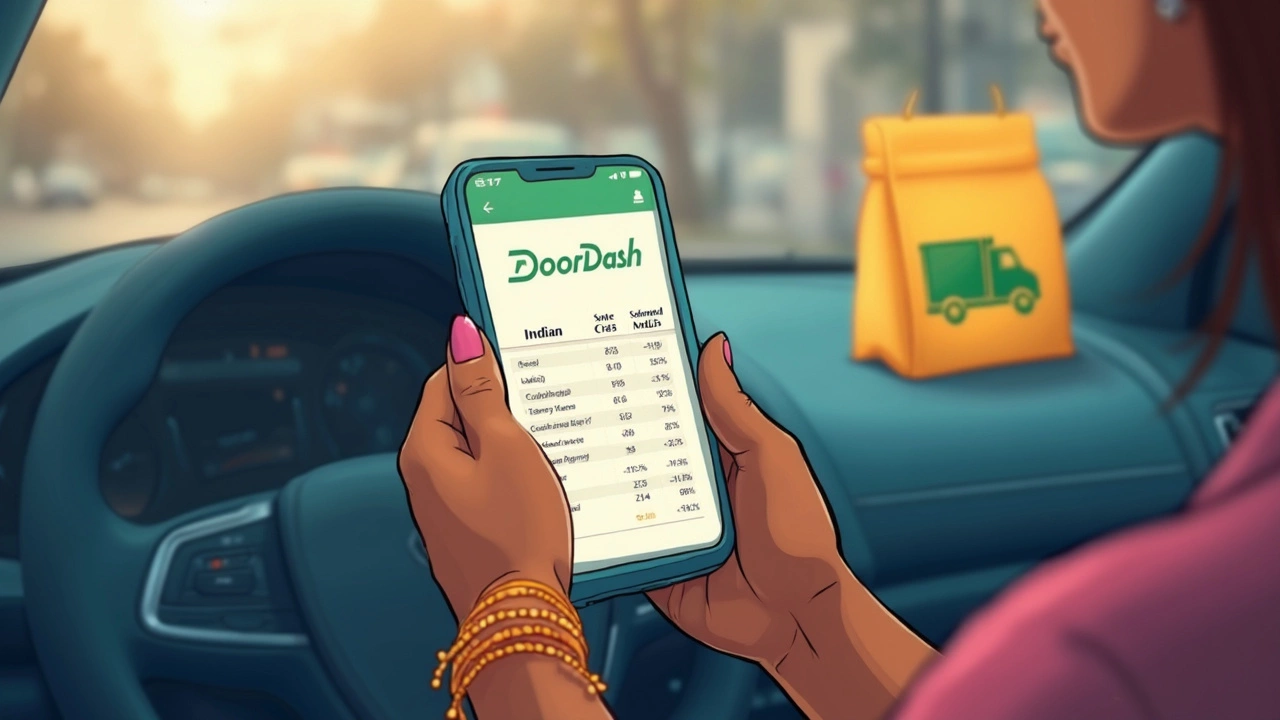
Top Companies for Gig Work Coverage
Not every car insurance company treats DoorDash and gig work drivers the same way. Some make it way easier (and cheaper) to keep things legal. If you’re shopping around, here are the names that keep coming up for delivery drivers who want to avoid surprises.
- State Farm: State Farm is the biggest name most drivers mention. They offer something called a "rideshare endorsement" that works for food delivery, not just people driving for Uber or Lyft. In most states, this add-on only costs about $20 to $35 extra per month. The nice part? You can usually keep your regular personal policy instead of going full commercial.
- GEICO: Their "hybrid" policy is pretty unique. You tell them you’re doing DoorDash, and they blend personal and business coverage into one single plan. No weird loopholes or guessing what’s covered. It tends to be priced right in the middle, and it’s available in a bunch of states.
- Allstate: They’ve got an option called "Ride for Hire.” It covers food and package delivery jobs like DoorDash for just a few extra bucks every month (usually under $40). Allstate’s app also makes it easy to manage your policy if you pick up multiple side gigs.
- Progressive: These guys are popular with freelancers and gig drivers across the board. Their “Rideshare” coverage can include food delivery, but you should call and double check that it covers DoorDash. Rates shift a lot by location—sometimes it’s as cheap as $15 extra per month, sometimes more.
- Farmers: Farmers stands out because they specifically mention food delivery in their policy add-ons. If you’re delivering for multiple apps (think DoorDash, Instacart, Grubhub), let them know. They often bundle coverage for less money than two separate policies would cost.
One thing to remember: before you even start comparing prices, tell the agent you’re delivering for DoorDash. A lot of deals vanish the second you hide your gig work from a carrier. Call, ask direct questions, and get any coverage promises in writing. It’s the only way to make sure you don't get the rug pulled out from under you if something goes wrong out on the road.
Smart Ways to Lower Your Costs
Shopping around is a non-negotiable if you want to keep your DoorDash car insurance affordable. Every insurer treats delivery driving differently: some add a small fee, others want you on a totally separate policy. Saving money starts with knowing your options and making a few smart moves.
- Compare quotes, not just big names: Progressive, GEICO, State Farm, and Allstate all offer coverage for delivery drivers, but the price differences are wild. Some drivers pay as little as $10 extra a month at one company, but get quoted $75 more at another for the same coverage. Check at least three before you decide.
- Ask about rideshare or delivery add-ons: Don’t settle for a full commercial policy unless you have to. Most drivers qualify for a rideshare or delivery add-on, which usually costs less than fully commercial coverage. Always ask for details about these endorsements.
- Adjust your coverage limits: If you’re carrying more insurance than you need, see if you can tweak your policy. Dropping extras like comprehensive or rental car coverage brings down your premium, but make sure you’re still following your state’s minimums and DoorDash’s requirements.
- Make your car look good on paper: Clean driving records score lower rates. So does using a safer, cheaper-to-repair car—think Honda Civic, not BMW X5.
- Bundle policies: If you have homeowners or renters insurance, bundle it with auto insurance. Most providers give up to a 25% discount.
- Track your miles: Some insurers offer "pay-per-mile" coverage. If you do DoorDash part time, low annual mileage could save you money.
- Keep up your score: Some insurance companies use your credit score as a factor. Keeping a good credit history can slightly lower your premium.
To show what you might expect based on known numbers from 2024, check out this summary:
| Type of Policy | Estimated Monthly Extra Cost |
|---|---|
| Personal Policy Only (No Disclosure) | $0 (but risks denial of claims) |
| Rideshare/Delivery Add-On | $20–$50 |
| Commercial Auto Policy | $120–$350+ |
The bottom line: Be upfront with your insurer and don’t just take the first offer. Those few phone calls can save you hundreds over the course of a year, and you’ll avoid any nasty surprises if things go wrong on a DoorDash run.
What DoorDash Drivers Wish They Knew
Most people jump into DoorDash without realizing that insurance is a whole different game. Here’s what the most experienced Dashers say they wish they’d known before piling their car full of takeout.
- DoorDash’s own coverage is extremely limited. It only helps if you’re actually carrying food to a customer—if you’re just driving to pick up an order or waiting in your car, your own policy is on the hook.
- If your insurer finds out you’re doing deliveries and you didn’t mention it, they can drop you fast—even after a claim. This catches so many new drivers off guard every year.
- Some states force delivery drivers to buy special commercial policies, which can be two to three times more expensive. In California, for example, the average monthly cost can shoot from $140 to $380 just for delivery drivers.
- Your personal rates might jump even if you only drive a few hours each week. There’s no "part-time" discount because insurers just see higher risk.
This is where things really hit home. According to a 2024 survey by Zebra, over 60% of DoorDash drivers said they had no idea their personal car insurance wouldn’t pay out if they crashed while delivering food. One Dasher on Reddit warns,
"My insurance agent told me flat out: if you don’t add delivery coverage and get in a wreck while dashing, they won’t pay a dime. I learned that the hard way with my buddy’s claim."
To clear things up, here’s a quick comparison table showing what’s covered by personal insurance, DoorDash, and commercial insurance:
| Coverage Type | Personal Policy | DoorDash Insurance | Commercial Policy |
|---|---|---|---|
| Driving to Pick Up Order | Covered (if not delivering) | Not Covered | Covered |
| Delivering Order | Usually Not Covered | Covered (liability only) | Covered |
| Waiting for Orders | Covered | Not Covered | Covered |
If you want to keep your car and your wallet safe, here’s what seasoned DoorDash drivers suggest:
- Tell your insurer you’re delivering for DoorDash. Hiding it can cost you way more than just higher rates.
- Shop around—some major companies like Progressive and State Farm offer reasonable delivery endorsements.
- Keep paperwork handy: if something happens, you’ll need proof you were working (or not) for a claim.
- Track your delivery mileage for tax write-offs—this seriously adds up if you drive a lot.
No one likes paying more for insurance, but being caught uncovered is way more expensive. With a little planning, you can keep your side hustle safe without draining your paycheck.
